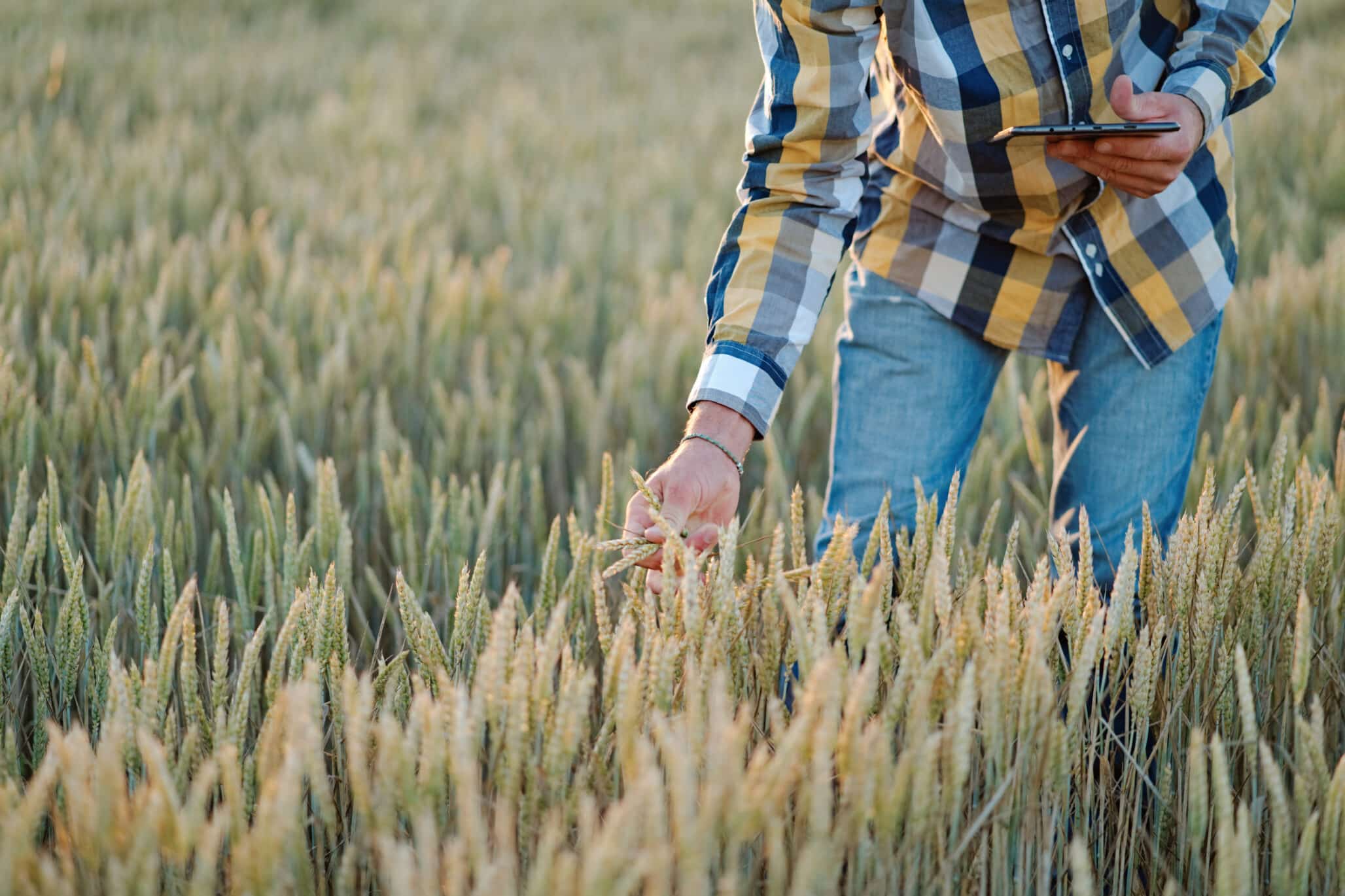As continuous developments occur in the seed industry — both in Canada and globally — experts look at ways to overcome challenges and broaden opportunities.
_x000D_
The seed industry has always been continuously evolving, but in the past few years change has been especially rapid, largely due to new technology in seed breeding._x000D_
_x000D_
While this is good news, challenges certainly remain for Canada’s seed industry, one of which is the big lack of young people choosing this industry as a career — a problem that will only worsen in coming years._x000D_
_x000D_
“From a seed analyst point of view, one of the main issues is the decline in the number of accredited analysts,” says Sarah Foster. As president of 20/20 Seed Labs in Nisku, Alta., she says a major effort is needed to get people to join the industry._x000D_
_x000D_
“In terms of analysts, we’re still strapped in where we get our training — which is mostly on the job,” she says. “When you look 10 years from now, there is a distinct generation difference, and I’m concerned as we go into a more sophisticated testing regime that we are not going to have the people in place.”_x000D_
_x000D_
To help combat this issue, 20/20 Seed Labs has hired people from abroad._x000D_
_x000D_
“But part of that is we can’t afford to pay people what they expect coming out of university,” she explains. “There are different levels and unfortunately we cannot incentivize people to come when we cannot charge enough for what we are doing. That’s essentially the bottom line.”_x000D_
_x000D_
Francis Glenn, president of Glenn Seed in Blenheim, Ont., and this year’s recipient of the Canadian Plant Breeding and Genetics Award, echoes this sentiment._x000D_
_x000D_
“The development in plant breeding in 40 years has been incredible. I earned my PhD in 1974, but the number of people being trained like I was is nearly zero,” he says. “Everything has been training regarding genetics, but I also think people need to be trained like I was so they can put all the information in a package that is a product that can go do a job in the farmers’ fields.”_x000D_
_x000D_
He says much research now is understanding the genetic background and chemical steps that take place, but “it is the performance of the variety that takes place that remains incredibly important for the future,” he stresses._x000D_
_x000D_
As a child growing up on a dairy farm in eastern Ontario, Glenn always knew he would pursue agriculture as a career. As a true innovator in breeding hybrid corn, he says there needs to be more education about what sustainability really means in terms of proactive agriculture._x000D_
_x000D_
“We need to get the message out that there this can be a great career. There’s so much to learn.”_x000D_
_x000D_
International Partnerships_x000D_
_x000D_
Another challenge is getting Canada’s seed industry more well-known on the global stage. In an effort that will help both Canada and France, Canterra Seeds and Limagrain — a French international agricultural co-operative group that specializes in field seeds, vegetable seeds and cereal products — have formed a partnership to bring higher yielding wheat varieties to farmers._x000D_
_x000D_
Headquartered in Saskatoon, this new business venture will focus on wheat breeding and specialize in varieties best suited to the Prairies._x000D_
_x000D_
“This venture will bring Limagrain’s expertise in plant genetics to producers through Canterra Seeds’ long-standing presence in Canadian agriculture,” says David Hansen, Canterra Seeds president and CEO, who adds that the passage of the Agricultural Growth Act has opened doors to international joint ventures such as Limagrain Cereals Research Canada._x000D_
_x000D_
“By passing Bill C-18 and ratifying UPOV 91, Canada is finally on a level playing field with the rest of the international plant breeding community. This has thrown open the door to new opportunities that we can pass on to our customers.”_x000D_
_x000D_
Daniel Cheron, director general of Limagrain, which is based in Saint-Beauzire, Puy-de-Dôme, France and has 100 research facilities in 66 countries, says his company’s goals are to help Canadian farmers be more competitive and to allow Limagrain to build a long-term strategy here._x000D_
_x000D_
“To be a competitor in the seed industry today, you need to be international,” says Cheron. “You need to develop a partnership in research and marketing so you can produce the best seeds in the world and understand the needs of customers.”_x000D_
_x000D_
While the importance of being globally competitive cannot be overstated, there are definite challenges in both achieving and maintaining this._x000D_
_x000D_
“We need to master the diversity of genetic resources, and to do so we need to be present in the different markets so we can develop our seed,” Cheron explains. “The question we have today is how to connect our different breeding stations and be sure we have a good line that is, for example, disease resistant, and can be used in another country. We need to connect the two breeders and be able to transfer information.”_x000D_
_x000D_
As managing director at the Crop Development Centre at the University of Saskatchewan in Saskatoon, Kofi Agblor is a big proponent of collaboration. He says the CDC — a field crop research organization where scientists integrate basic research with genetic improvement of many crops — emphasizes partnerships with both for-profit and not-for-profit organizations and other government agencies as it continues to work at increasing durability in plants and disease resistance._x000D_
_x000D_
“We need to continue to inform [the public] that the science we are deploying is enhancing traits and that it is not harmful to the environment or people. It’s also time to take stock of the agriculture policies that have taken place in Canada over the past 30 years and look at what we have been able to do — which is not insignificant — with growers, government and industry.”_x000D_
_x000D_
Standards and Science Changing_x000D_
_x000D_
As developments continue to occur in the industry, particularly in seed testing, Foster says she has found it beneficial to be a member of the International Seed Testing Association, which allows her company access to this broader scientific community._x000D_
_x000D_
“This is important because that is where most of the work is being done from a scientific perspective,” she says. “It has allowed us to access to more information in terms of tests that we are going to need [with respect to] new varieties and breeding schemes. There are different ingredients and chemicals being offered to boost vigour. We have to be more knowledgeable in what is being put on the seed.”_x000D_
_x000D_
She stresses the importance of having a standard procedure in place so that testing can be as effective as possible._x000D_
_x000D_
Another issue Foster is concerned with relates to the sampling of grasses._x000D_
_x000D_
“We don’t have maximum lot size in Canada, so with that, we’re not always getting a representative sample, because there are different techniques,” she says._x000D_
_x000D_
To combat this, she says this issue needs to be addressed quickly with authourized samplers._x000D_
_x000D_
“A lot of the sampling we are doing is automatic and we get good samples that way, but not everyone is doing this with a standardized approach,” she explains. “The second part — with the native grasses and the rangeland grasses — those species are not in Schedule 1 of the Seed Regulations, so they are not on the grade tables. It’s open to the analyst’s interpretation in terms of what the seed size is, so we are given a number of different manuals to get our information from. What ends up happening in terms of the results, is how we got that sample and was the working sample the right sample?”_x000D_
_x000D_
She adds that Canada is also unique when it comes to purity._x000D_
_x000D_
“The industry is talking about a search on the bulk of the sample — not a pure seed. Everywhere else in the world it’s a given that we do a per cent pure seed and a purity, but we don’t do that automatically here. But we would do it on native grasses if it was understood that it needed to be done. So, because this doesn’t appear in Schedule 1, it’s a bit of a gray area.”_x000D_
_x000D_
Finding the Commonalities_x000D_
_x000D_
Even though the success of Canada’s seed industry relies on ensuring a strong regulatory framework exists here at home, future growth in the industry relies on the collaboration and partnerships formed both here and abroad. While this task at first might seem daunting, rise of information technology allows people to connect much more readily._x000D_
_x000D_
“The speed of communication now means you are accessible 24 hours a day. We can talk to almost anyone around the world at any time,” says Mike Hofer, director of seed solutions for BASF Functional Crop Care._x000D_
_x000D_
“It’s exciting as well for BASF as a global company because time zones can sometimes be a challenge. Because of information technology, how we communicate, what we communicate and then what we’re able to analyze — even from a diagnostics tool perspective as we look at seeds and plants — is changing.”_x000D_
_x000D_
Hofer thinks that today’s improvements in information technology will help improve customer service, as BASF and others will be able to offer more timely and accurate advice._x000D_
_x000D_
Hofer is quick to point out that despite the challenges facing the seed industry, the future looks promising._x000D_
_x000D_
“It’s not just the challenges, but the opportunity. I have worked in many different countries and it’s been really exciting for me to learn about the different people and cultures and the different way they farm. Within all that there are a lot of commonalities. Once we understand the commonalities, we have synergies we can offer and bring to the seed industry.” Lisa Kopochinski











